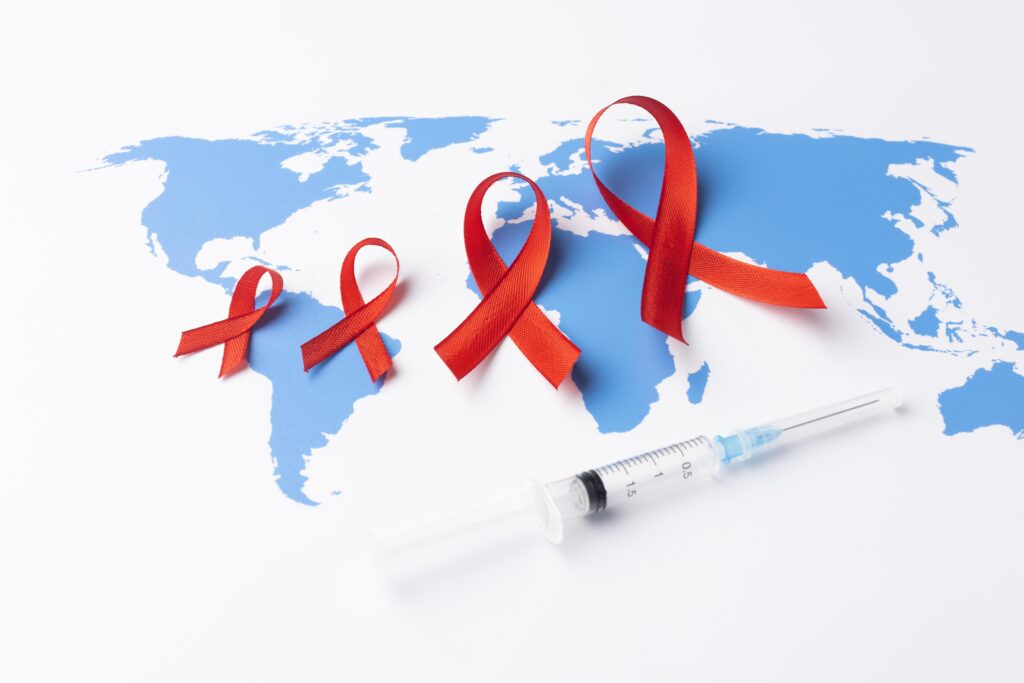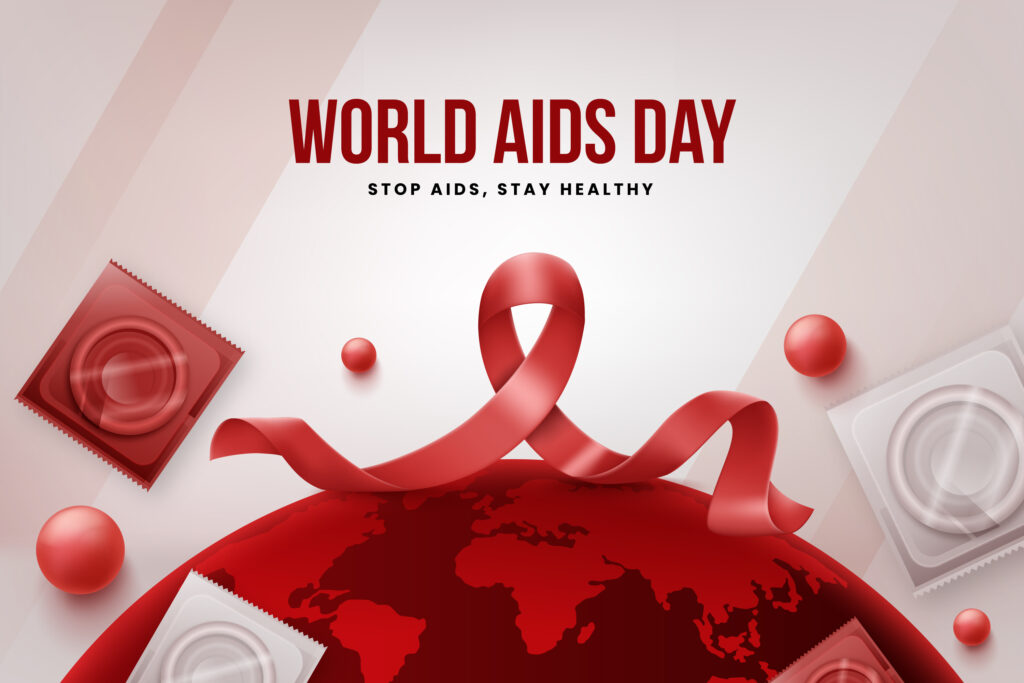HIV & AIDS Awareness:
National Youth HIV & AIDS Awareness Day presents an essential opportunity for raising awareness about the HIV and AIDS epidemic among young people. The day highlights the importance of education, prevention, and the ongoing efforts to reduce the stigma surrounding HIV/AIDS. This article explores key facts about HIV, its impact on youth, and the steps being taken to ensure the younger generation has the resources to protect themselves and others. Through community involvement, social media campaigns, and policy changes, we can create a world where HIV is prevented, and the stigma is eradicated.
The Value of Youth Awareness of HIV and AIDS:
HIV (Human Immunodeficiency Virus) and AIDS (Acquired Immunodeficiency Syndrome) continue to be significant Public Health concerns worldwide, particularly among young people. Adolescents and young adults, ages 13 to 24, account for a significant portion of new HIV diagnoses, making them a vital demographic to target for prevention and education efforts.
While advances in treatment and prevention have greatly improved the outlook for those living with HIV, the epidemic remains an ongoing challenge, especially in marginalized communities. National Youth HIV & AIDS Awareness Day serves as a reminder that empowering youth with knowledge and resources is crucial to preventing new infections and improving health outcomes.
Raising Awareness to Reduce New Infections:
HIV and AIDS awareness is vital for reducing the number of new infections among young people. The prevalence of HIV is often highest in communities where youth lack access to accurate information, education, and preventive measures. By raising awareness, we can foster better understanding, reduce risky behaviors, and increase access to preventive methods like condoms, PrEP (pre-exposure prophylaxis), and regular HIV testing.
Through initiatives such as National Youth HIV & AIDS Awareness Day. We can focus on educating young people about the realities of HIV. The importance of safe sexual practices, and the need for regular HIV testing. These efforts help break down the barriers that contribute to new infections, such as misinformation, fear, and stigma.

The Role of Education and Regular Testing:
In the battle against HIV, education is one of the most successful tactics. Teaching young people about HIV transmission, prevention, and the importance of getting tested can significantly reduce the risk of new infections. HIV education should be comprehensive, addressing not only safe sex practices but also the emotional and psychological aspects of living with HIV.
Adolescents must understand how HIV is transmitted (through unprotected sex, sharing needles, and from mother to child during childbirth or breastfeeding) and the ways to protect themselves. Condoms, vaccination for Hepatitis B, and knowing one’s HIV status through regular testing are essential components of this education.
Early discovery reduces the risk of transmission and allows for timely treatment, which is made possible by routine HIV testing. Unfortunately, many young people delay testing or don’t have access to HIV testing resources, making it more difficult to control the spread of the virus. Important first steps in addressing this issue include expanding access to testing facilities and making sure that testing is both inexpensive and private.
Combating HIV Stigma:
One of the biggest challenges in the fight against HIV is the stigma that surrounds it. Young people often fear being judge, ostracize, or even discriminate against if they are diagnose with HIV. They may be discourage from getting help, therapy, and testing because of this stigma.
Addressing this stigma is another opportunity provided by National Youth HIV & AIDS Awareness Day. By sharing stories of people living with HIV, highlighting the success of antiretroviral treatments, and promoting understanding, we can change the narrative around HIV. It is essential to create a society where young people feel safe to access HIV care and talk openly about their health.
The Impact of Community Efforts:
In order to raise awareness about HIV and AIDS, communities are essential. Whether it’s through grassroots organizations, local health departments, or community health workers, efforts to provide education, resources, and support are critical in reaching young people where they are. Community-based campaigns are often more effective because they cater to the specific needs and challenges of the local population.
In addition, national and global campaigns can provide a broader platform for raising awareness. Events like National Black HIV/AIDS Awareness Day, National Women and Girls HIV/AIDS Awareness Day, and National HIV/AIDS Awareness Day are hold to raise awareness of the importance of HIV education and testing. These observances serve to highlight specific populations that are disproportionately affect by HIV and AIDS and bring attention to their unique needs.
Social media has proven to be an invaluable tool for reaching the youth demographic. Online campaigns, influencer-led initiatives, and the sharing of informational resources can spread awareness about HIV prevention and testing. Influencers, especially those from communities at higher risk of HIV, can help destigmatize HIV by openly discussing the topic and promoting safe practices.
Government and Policy Action:
The fight against HIV requires changes to policy. Governments can make a significant impact by ensuring that HIV education is integrate into school curricula, providing funding for HIV prevention programs, and making HIV testing and treatment more accessible. Furthermore, policies that address the socioeconomic determinants of health (such as housing, healthcare access, and job discrimination) and safeguard the rights of individuals living with HIV are essential to stopping the virus’s spread and helping those who are impact.
Policy changes can also improve the availability and affordability of HIV prevention methods, such as PrEP, and ensure that they are widely accessible to young people. Laws that reduce stigma and discrimination in healthcare settings and workplaces are essential for improving the quality of life for those living with HIV and encouraging young people to get test and seek care.
The Significance of Key Observances and Dates:
Several important days throughout the year focus on raising awareness about HIV and AIDS, each with a unique emphasis:
- National Youth HIV & AIDS Knowledge Day: This day is devote to empowering and educating youth in order to raise public awareness of HIV prevention and support for those who are HIV positive.
- National Black HIV & AIDS Awareness Day: This day serves as a chance to address health disparities and promote increased testing and prevention in Black communities, with the goal of increasing awareness of the disproportionate impact of HIV on the Black population.
- National Women and Girls HIV/AIDS Awareness Day: This day highlights how HIV affects women and girls, who are more vulnerable, especially in places with limited access to healthcare.
- National HIV/AIDS and Aging Awareness Day: Highlights the specific problems older adults with HIV confront and the value of lifelong care.
- National Native HIV/AIDS Awareness Day: Highlights the needs of Native American communities in relation to HIV prevention and care.
These observances help draw attention to specific demographics that may have unique challenges or risks when it comes to HIV prevention, care, and treatment. By raising awareness, these days aim to ensure that no group is left behind in the global effort to fight HIV/AIDS.
Empowering Youth to Protect Themselves and Others:
To ensure a future where HIV is no longer a threat to young people. It’s important to create environments where youth can access the education, resources, and support they need. Comprehensive sex education, regular HIV testing, access to prevention methods like Prep, and stigmatization of HIV should be prioritize.
Support from influencers, advocacy groups, healthcare providers, and governments can help ensure that all young people, no matter their background or circumstances, have the tools they need to make informed decisions about their health. Awareness campaigns, educational materials like AIDS/HIV awareness posters, and community outreach efforts are crucial in achieving this goal.
Through ongoing efforts to raise awareness for HIV and AIDS, we can create a world where young people are not only educate about HIV but are also empower to protect themselves, prevent new infections, and stand up against the stigma that still surrounds the virus.

Final Thoughts:
A potent reminder of the significance of empowering and educating young people to protect themselves from HIV is provided by National Youth HIV & AIDS Awareness Day. Through awareness efforts, education, community support, and policy changes, we can reduce the number of new infections and ensure that young people have the tools they need to live healthy, HIV-free lives. All facets of society must work together to combat HIV/AIDS, and it is our joint responsibility to make sure that the next generation has access to the information, tools, and assistance they require to be safe.
By observing National Youth HIV & AIDS Awareness Day, we not only raise awareness for HIV/AIDS but also contribute to building a future where HIV is no longer a threat and the stigma surrounding it is a thing of the past. Let’s continue to work together to protect our youth and ensure they have a future free from HIV and AIDS.
For more insightful articles and the latest updates on topics like HIV awareness, health, and much more, visit Update Rifts. We are dedicate to bringing you relevant news and informative content to keep you inform and empower. Don’t miss out on any updates—subscribe to our newsletter today and stay connected with us for valuable resources and expert insights!

